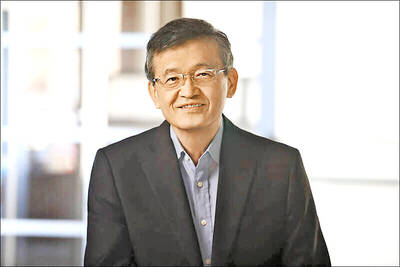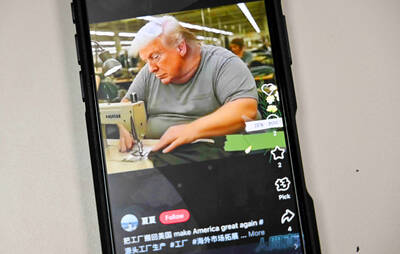China’s GDP growth likely slowed further in the second quarter, an AFP survey has found, as a slowdown in investment and trade weighed on the world’s second-largest economy. The median forecast in a poll of 14 economists indicates GDP expanded 6.9 percent in the April-to-June quarter, marginally down from 7 percent in the first three months of this year.
That would be the worst quarterly result since the first three months of 2009 — in the depths of the global financial crisis — when China’s economy expanded by 6.6 percent.
The National Bureau of Statistics is set to release the official GDP figures for the first quarter of this year on Wednesday. China’s volatile stock markets have grabbed headlines this month after the benchmark Shanghai Composite Index fell more than 30 percent in less than four weeks.
However, economists are focused on more fundamental issues when assessing its overall health.
“According to the figures we have now, economic activity remained very sluggish, particularly fixed-asset investment, which grew 11.4 percent in May, a multi-year low,” ANZ Hong Kong-based economist Liu Li-gang (劉利剛) told reporters of the second-quarter performance. “Exports were weak and imports were even more so.”
State Information Center analyst Li Ruoyu said the economy is still under “quite big downward pressure.”
Li said new restrictions on local government debt and finance vehicles have limited lower-level authorities’ ability to fund infrastructure projects.
“The implicit guarantees of the local governments are gone, hurting their borrowing abilities,” she said.
The stock market turmoil could also create new risks in China’s financial system, which faces numerous other challenges such as high corporate debt and an opaque “shadow banking” sector.
However, the swings in equities are largely seen as having little effect on the real economy — a key driver of global growth — and unlikely to prove a major detriment to private spending.
“Given that the stock market didn’t provide any noticeable boost to spending on the way up, there is no reason to expect it to be a drag on the way down,” Capital Economics China specialist Julian Evans-Pritchard wrote in a report.
“With only a small and relatively wealthy portion of Chinese households exposed to the stock market, we aren’t particularly concerned about the impact of recent big falls in equity prices on consumption.”
For this year as a whole, the AFP survey predicts growth at a median 7 percent, more optimistic than a forecast of 6.8 percent in a similar poll in April and in line with the government’s official target of “about 7 percent.”
The IMF last week left its forecast for China intact at 6.8 percent this year, brushing off worries over Shanghai share volatility.
“The puncture of what had clearly become a stock market bubble may have some limited effect on spending,” IMF chief economist Olivier Blanchard said on Thursday. “There is no particular reason to have lost confidence [in China’s economy].”
China last year recorded its slowest annual growth since 1990, expanding 7.4 percent, down from 7.7 percent in 2013.

Intel Corp chief executive officer Lip-Bu Tan (陳立武) is expected to meet with Taiwanese suppliers next month in conjunction with the opening of the Computex Taipei trade show, supply chain sources said on Monday. The visit, the first for Tan to Taiwan since assuming his new post last month, would be aimed at enhancing Intel’s ties with suppliers in Taiwan as he attempts to help turn around the struggling US chipmaker, the sources said. Tan is to hold a banquet to celebrate Intel’s 40-year presence in Taiwan before Computex opens on May 20 and invite dozens of Taiwanese suppliers to exchange views

Application-specific integrated circuit designer Faraday Technology Corp (智原) yesterday said that although revenue this quarter would decline 30 percent from last quarter, it retained its full-year forecast of revenue growth of 100 percent. The company attributed the quarterly drop to a slowdown in customers’ production of chips using Faraday’s advanced packaging technology. The company is still confident about its revenue growth this year, given its strong “design-win” — or the projects it won to help customers design their chips, Faraday president Steve Wang (王國雍) told an online earnings conference. “The design-win this year is better than we expected. We believe we will win

Chizuko Kimura has become the first female sushi chef in the world to win a Michelin star, fulfilling a promise she made to her dying husband to continue his legacy. The 54-year-old Japanese chef regained the Michelin star her late husband, Shunei Kimura, won three years ago for their Sushi Shunei restaurant in Paris. For Shunei Kimura, the star was a dream come true. However, the joy was short-lived. He died from cancer just three months later in June 2022. He was 65. The following year, the restaurant in the heart of Montmartre lost its star rating. Chizuko Kimura insisted that the new star is still down

While China’s leaders use their economic and political might to fight US President Donald Trump’s trade war “to the end,” its army of social media soldiers are embarking on a more humorous campaign online. Trump’s tariff blitz has seen Washington and Beijing impose eye-watering duties on imports from the other, fanning a standoff between the economic superpowers that has sparked global recession fears and sent markets into a tailspin. Trump says his policy is a response to years of being “ripped off” by other countries and aims to bring manufacturing to the US, forcing companies to employ US workers. However, China’s online warriors